Article by Miriam Judith González Bolívar Kungsbacka Square , by White Architects, in Kungsbacka, Sweden Some places embed strong roots in the memories of their inhabitants. Unfortunately, over time, these important places may be replaced and forgotten. The memory remains dormant, waiting to resurface to help new generations understand the meaning those places once held for their community. Awakening this history and restoring it to the social and visual environment is no easy task.
Kungsbacka Square
How do we revive the nostalgia of the past?
Kungsbacka is a municipality in Halland, located in southwest Sweden. It is a picturesque town characterized by its wooden houses from the Nineteenth Century. In the heart of Kungsbacka, a church that had once been the heart of the community had been replaced by a parking lot. White Architects took on the challenge of revitalizing the dead square and honoring the place.
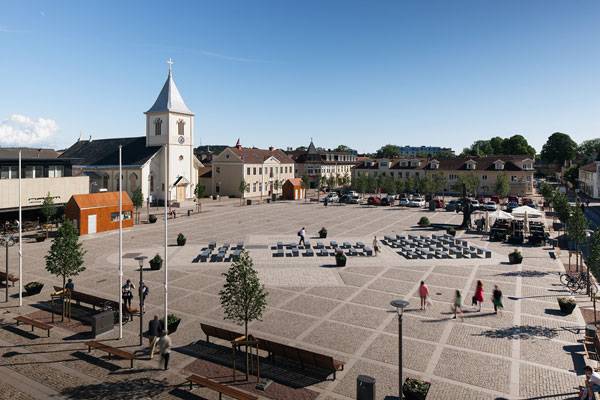
Kungsbacka Square. Photo courtesy of White Arkitekter
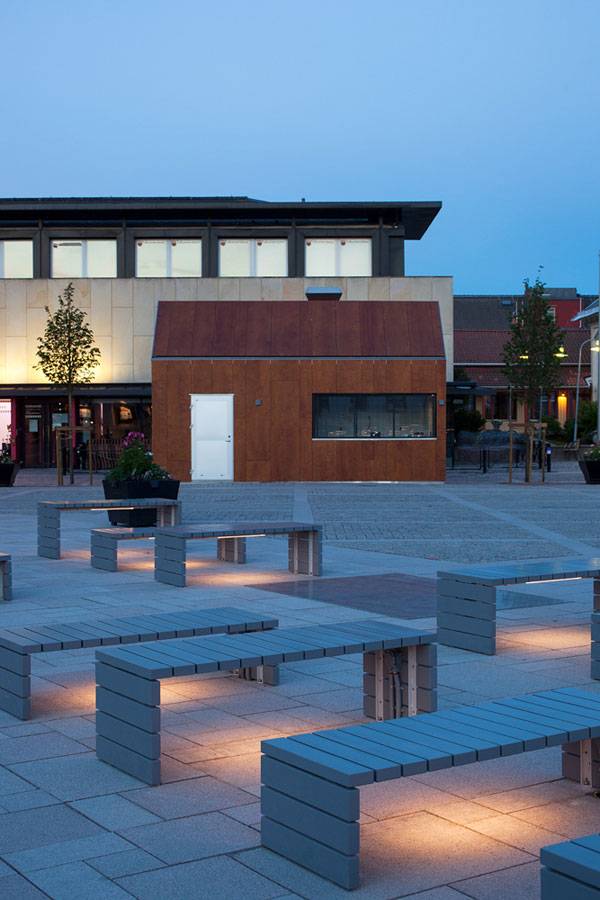
Kungsbacka Square. Photo courtesy of White Arkitekter
The Square
The plaza covers a total of 7,500 square meters revolving around the site of the old church. Paving plays a central role in the design. A checkered pattern defines the entire square, respecting the town’s grid of roads. The checkered grounds provide the versatility to host different events, meetings, and functions of this public space. Another ground pattern delineates the contours of the former church. Benches have been arranged to remind visitors of religious services, filling the center of the square. Flowerpots in the corners mark the boundaries of the church space.
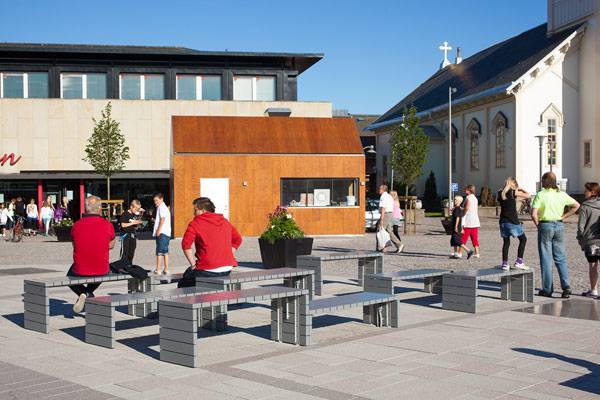
Kungsbacka Square. Photo courtesy of White Arkitekter
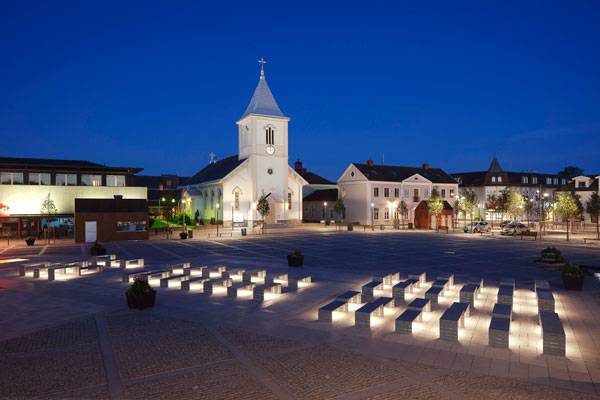
Kungsbacka Square. Photo courtesy of White Arkitekter
This furniture includes two kinds of benches:
- Church bench: This bench has a contemporary design that combines with the outdoor space. The streamlined benches have a versatile design that can be arranged in different sizes. The dimensions of these benches are 140.5×0.50×0.55m, 0.45m. They are made up of individual panels of steel plate, zinc-electroplated gold-chrome and powder-coated of 5 inches thick, pain slats have a 40mmx92mm measure. The seat is made of pine. These benches are low maintenance and able to withstand harsh weather conditions.
- Kajen bench: This bench was created from wooden slats. This bench can be adapted to other Kajen series, with back-head and footrest or standard bench with backrest and armrest, making it a versatile bench. Dimensions vary as with the church bench; lengths vary from 1.20 to 3.00 m, height, 0.46 m and depth 0.40 m. Seat and backrest are crafted in slats made from alkyd oil enameled pine.
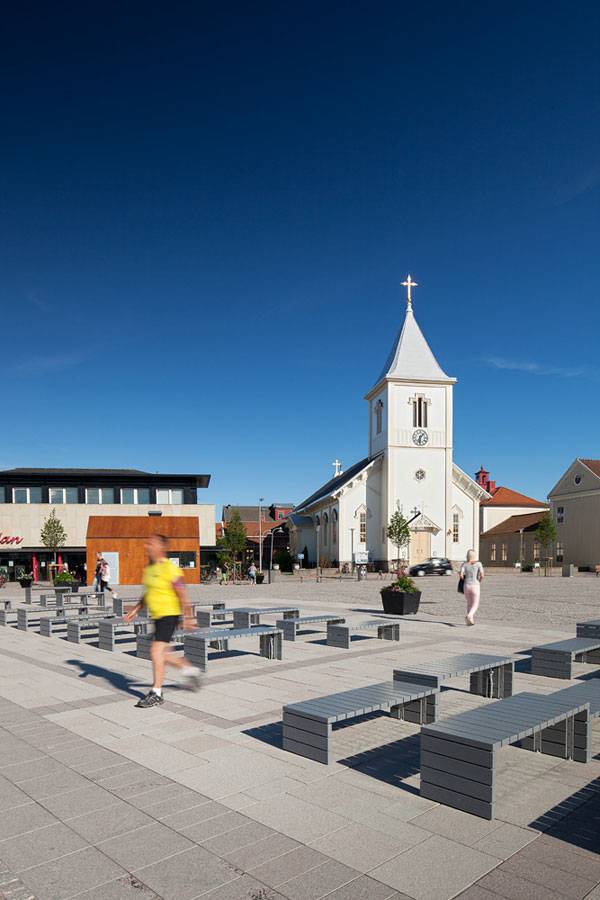
Kungsbacka Square. Photo courtesy of White Arkitekter
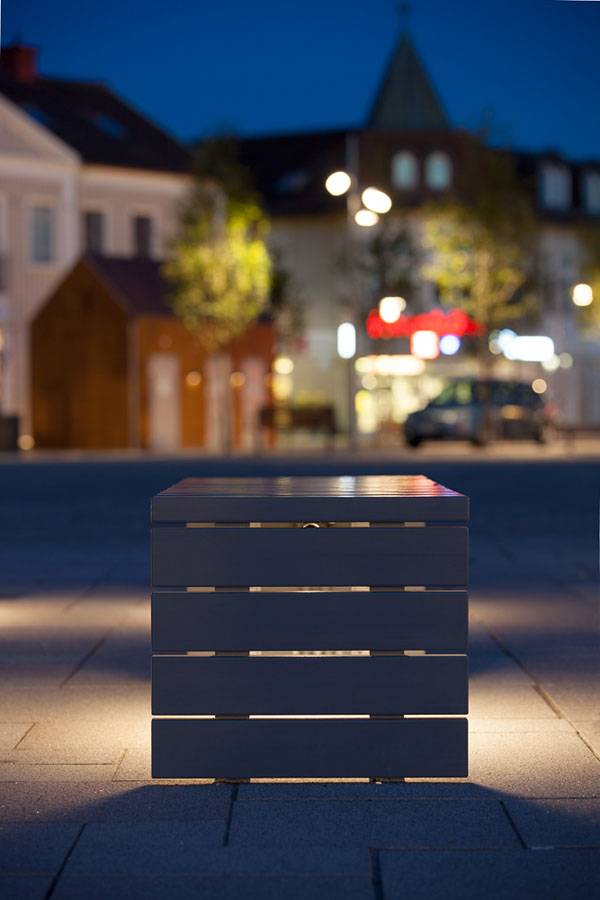
Kungsbacka Square. Photo courtesy of White Arkitekter
Cherry Copse
The square itself has a strong presence in the city. In contrast to the tough, checkered paving of the square, a simple but lovely copse of cherry trees has been added to smooth the contrast of textures. The function of the canopy works as a seasonal transition; the cherry trees are a guideline that announces the changing of the seasons. The perimeter of trees also works as a border for the square. Pedestrian Street The renovation of the square has meant an increase in pedestrian traffic. Pedestrianization has become something very popular and friendly to the environment and inhabitants.
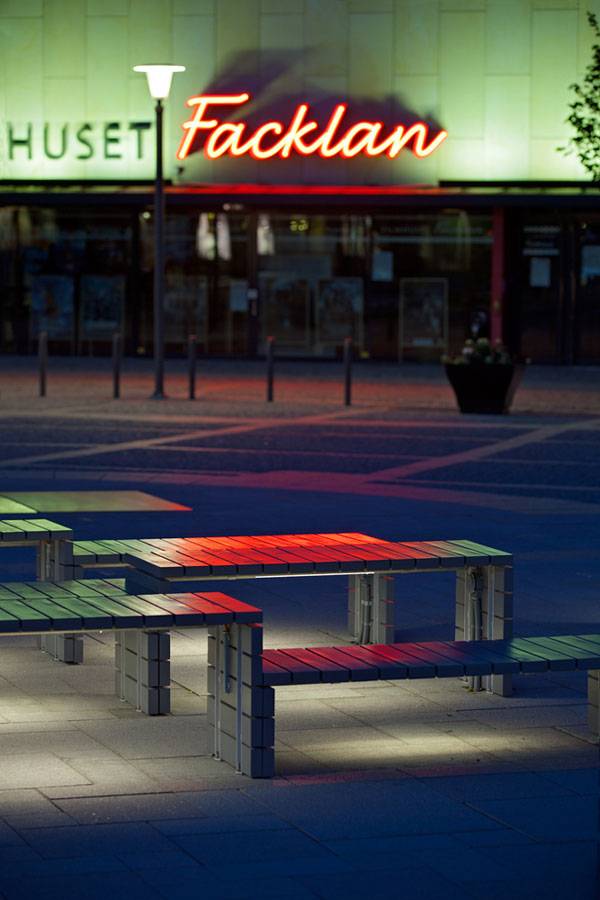
Kungsbacka Square. Photo courtesy of White Arkitekter
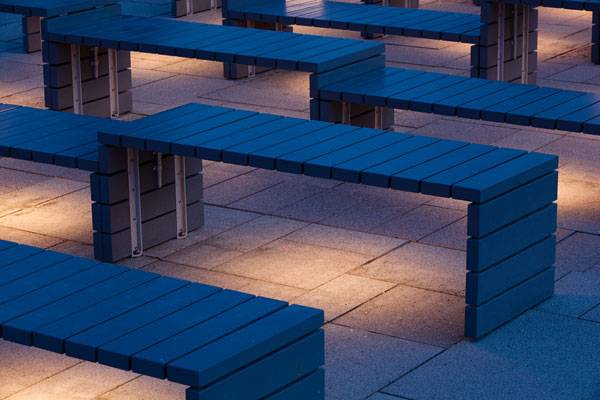
Kungsbacka Square. Photo courtesy of White Arkitekter
Modernization Reconciling with History
The successful integration of modern elements into a historical place blurs the limits between them, integrating them harmoniously and aesthetically. Taking back forgotten places without leaving behind traces of the present is important when revitalizing sites. Once again, Kungsbacka Square is a space for reunions and meetings. It is a place that respects history, and where this history meets the present, it brings back the place Kungsbacka Square used to be, giving residents a new space for recreation, relaxation, and something very important: the reintegration of the square to the community. Now, new generations will know part of the history of their town. Do you know a renovation project that respects the history of a place?
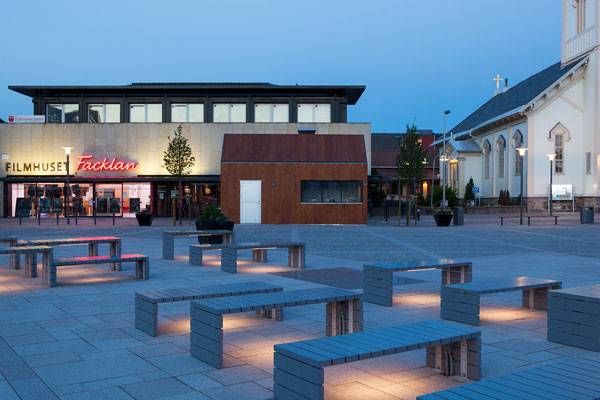
Kungsbacka Square. Photo courtesy of White Arkitekter
Full Project Credits For the Kungsbacka Square :
Project Name: Kungsbacka Square Location: Kungsbacka, Sweden Landscape Architecture: White Arkitekter Client: Kungsbacka Municipality Project Date: 2009-2012 Completed: 2012 Area: 7,500 square meters Cost: 22 million SEK Recommended Reading:
- Becoming an Urban Planner: A Guide to Careers in Planning and Urban Design by Michael Bayer
- Sustainable Urbanism: Urban Design With Nature by Douglas Farrs
Article by Miriam Judith González Bolívar
Published in Blog



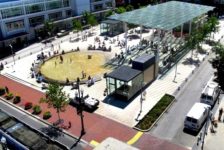
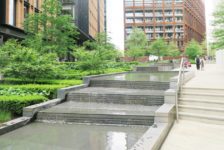
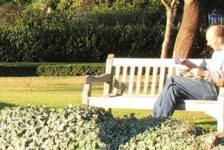


![Workaround [Video]](https://land8.com/wp-content/uploads/2018/03/richard-jones-land8x8-224x150.png)